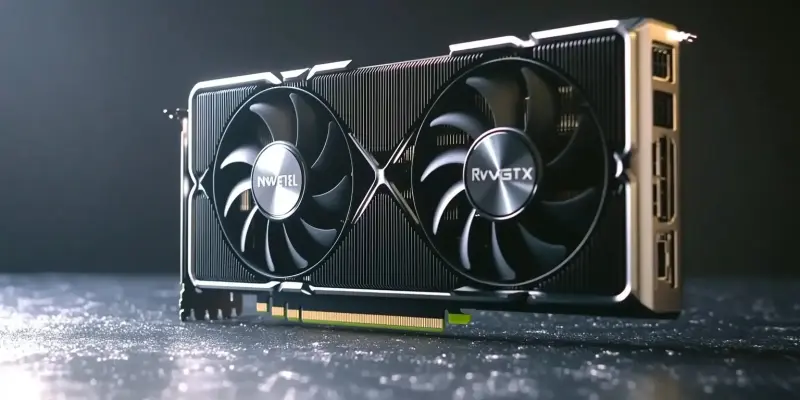The world of graphics processing units (GPUs) is in a constant state of evolution, and NVIDIA’s recent introduction of the RTX 50 Founders Edition cooler demonstrates a significant leap forward in both thermal efficiency and acoustic performance. Departing from its previous large and cumbersome designs, NVIDIA has reimagined the cooler for the RTX 50 series, returning to a more compact dual-slot format. This new design isn’t just about saving space; it is specifically tailored for small form factor (SFF) builds where every inch counts. At the heart of this revolutionary cooler is a 3D Vapor Chamber technology that encompasses the compact printed circuit board (PCB). This chamber plays a crucial role in heat dissipation for the GPU, VRAM, and power circuitry, ensuring that the components are kept at optimal temperatures even during peak performance.
Design and Innovation
The RTX 50’s cooling solution includes five large heat pipes connected to three distinct heatsinks, each equipped with numerous aluminum fins designed to maximize surface area for better heat dissipation. This intricate network works seamlessly to channel heat away from the core components, ensuring that the GPU remains cool even under heavy workload conditions. Unlike previous generations that needed massive cooler sizes to manage heat, the RTX 50 takes a more sophisticated approach. The dual axial fans integrated into the cooler are pivotal in circulating air through the heatsink fins. These fans not only excel at moving a high volume of air but also maintain a significantly lower noise output. While previous designs, such as the RTX 20 series, generated noise levels around 50 dBA at a 300W thermal design power (TDP), the RTX 50 manages to stay remarkably quieter, at around 30-35 dBA, even under a 600W load. This reduction in noise is a testament to NVIDIA’s focus on providing a quieter, more enjoyable user experience without compromising on cooling performance.
Evolution of Cooling Solutions
To fully appreciate the advancements made with the RTX 50 series, it’s essential to look back at the evolution of NVIDIA’s cooling designs. The journey began with the blower-style GTX 10 series, which was effective but noisy. The company then moved on to dual axial fans with the RTX 20 series, which brought about better cooling but still had considerable noise levels. This evolution continued with the RTX 30 and 40 series, where NVIDIA introduced dual-axial flow-through designs that focused on improving both thermals and acoustics. However, these solutions often resulted in larger, bulkier coolers. With the RTX 50 Founders Edition, NVIDIA has managed to strike a perfect balance by reconfiguring its cooling approach. The new design optimizes thermal performance while keeping the compact dual-slot format that modern gaming enthusiasts and system builders prefer. This marks a significant milestone in the development of GPU cooling technologies, providing high performance without the need for excessive bulk.
Enhanced User Experience
One of the primary goals of the new RTX 50 cooler is to enhance not just the thermal performance but also the overall acoustic experience for users. The importance of a quieter operation becomes particularly evident during intensive gaming sessions or heavy computational tasks, where distractions from fan noise can be bothersome. By achieving a noise level reduction to 30-35 dBA under full load, the RTX 50 Founders Edition ensures that users can enjoy a more serene environment. As the launch of the RTX 50 approaches, early insights suggest that these new coolers will set a new standard in thermal management and quieter operation, reaffirming NVIDIA’s commitment to innovation and user experience. The revamped design of the RTX 50 cooler indicates a future direction that focuses on delivering high-performance cooling solutions in a more compact and acoustically pleasant package, paving the way for the next generation of enthusiast-class GPUs.

